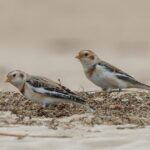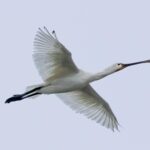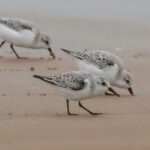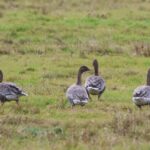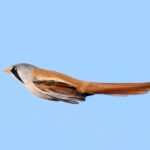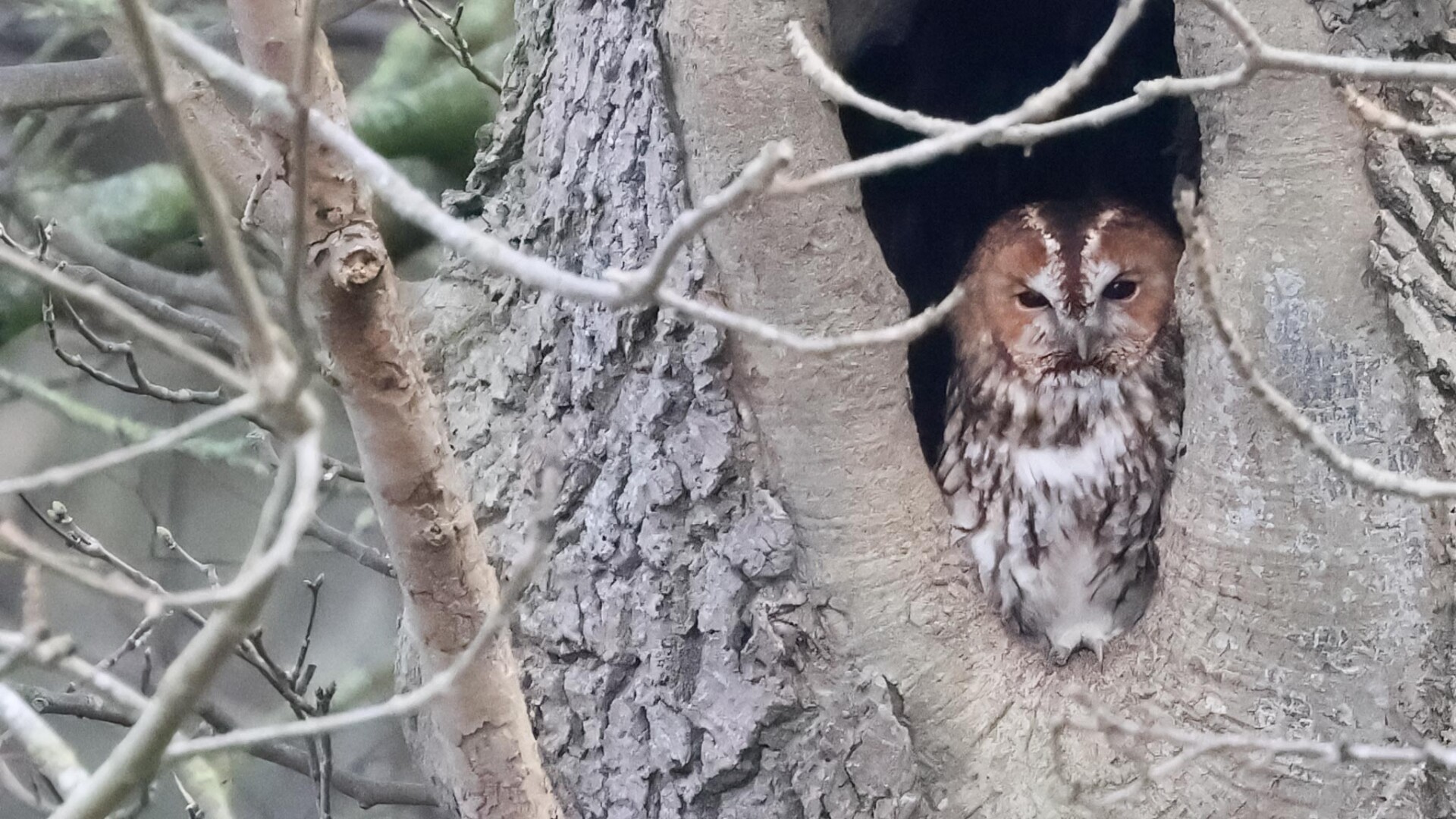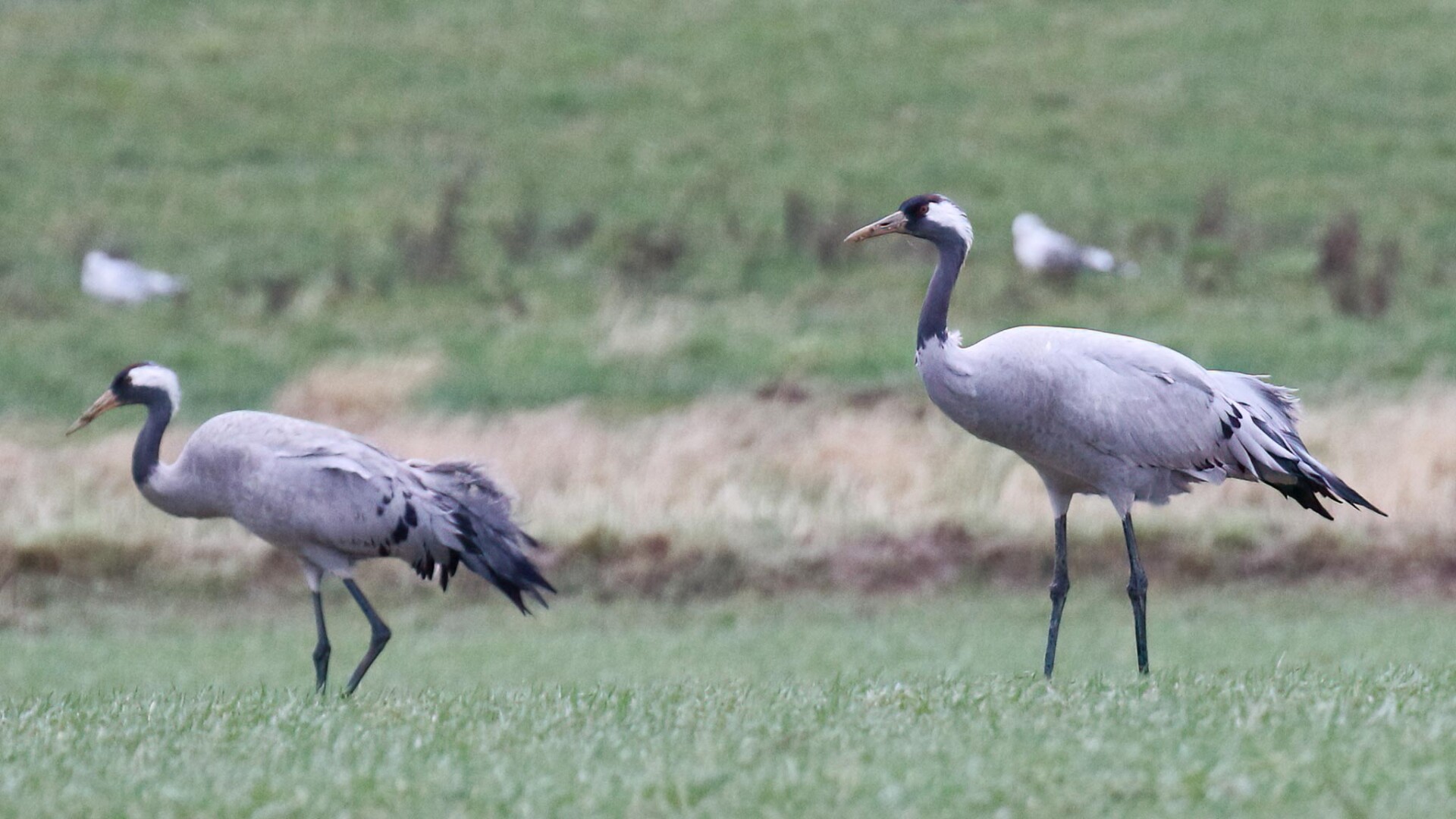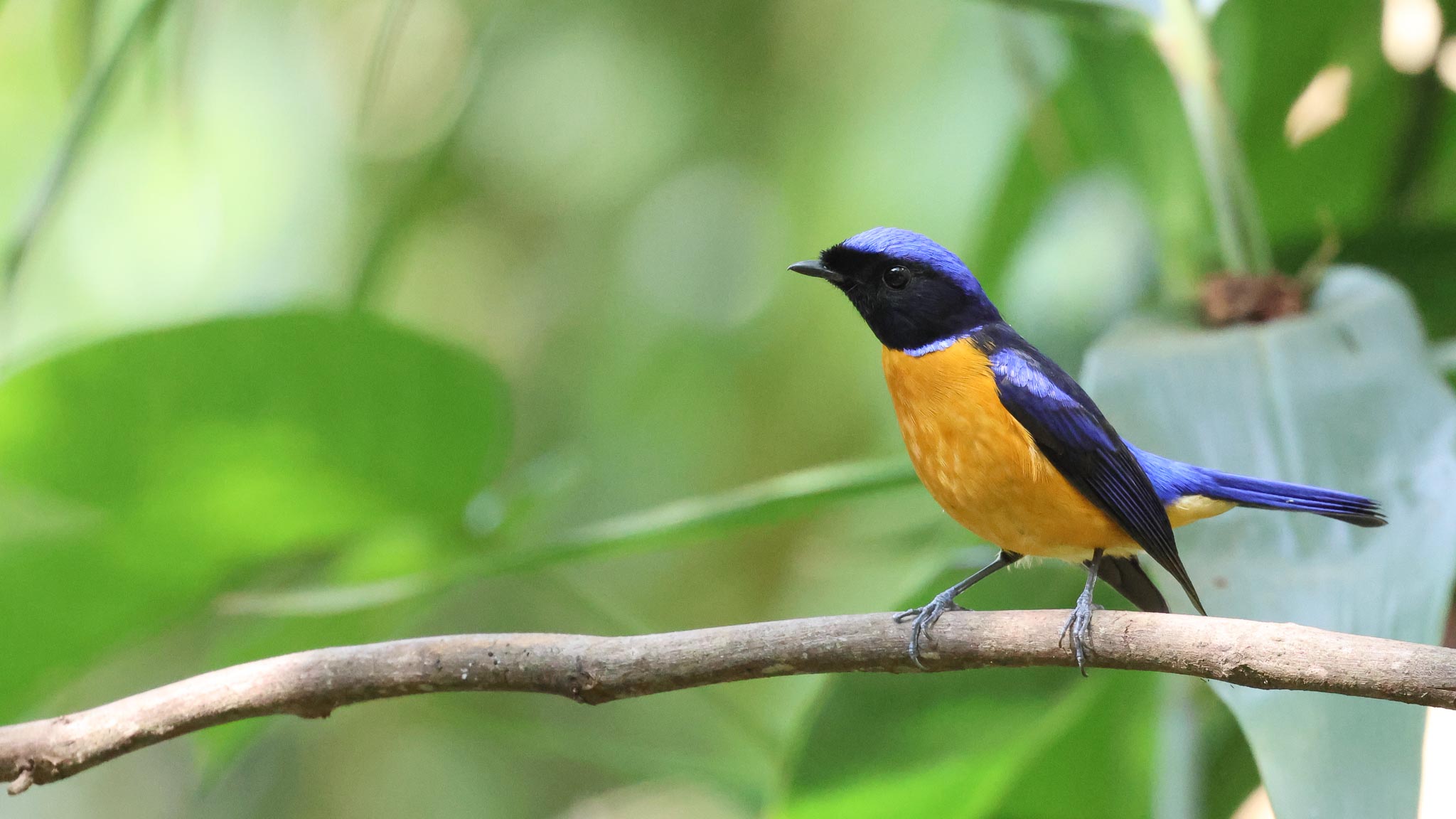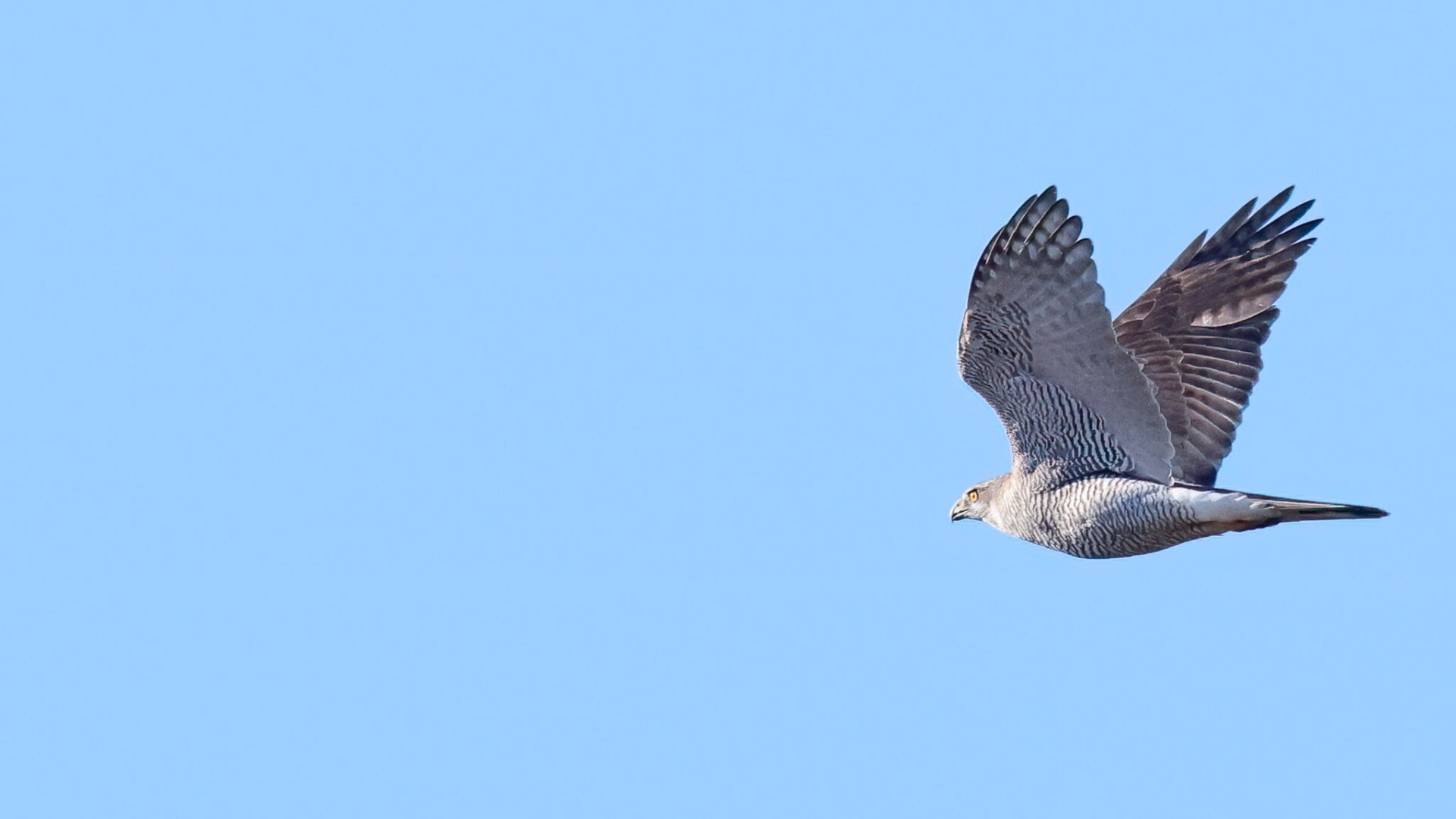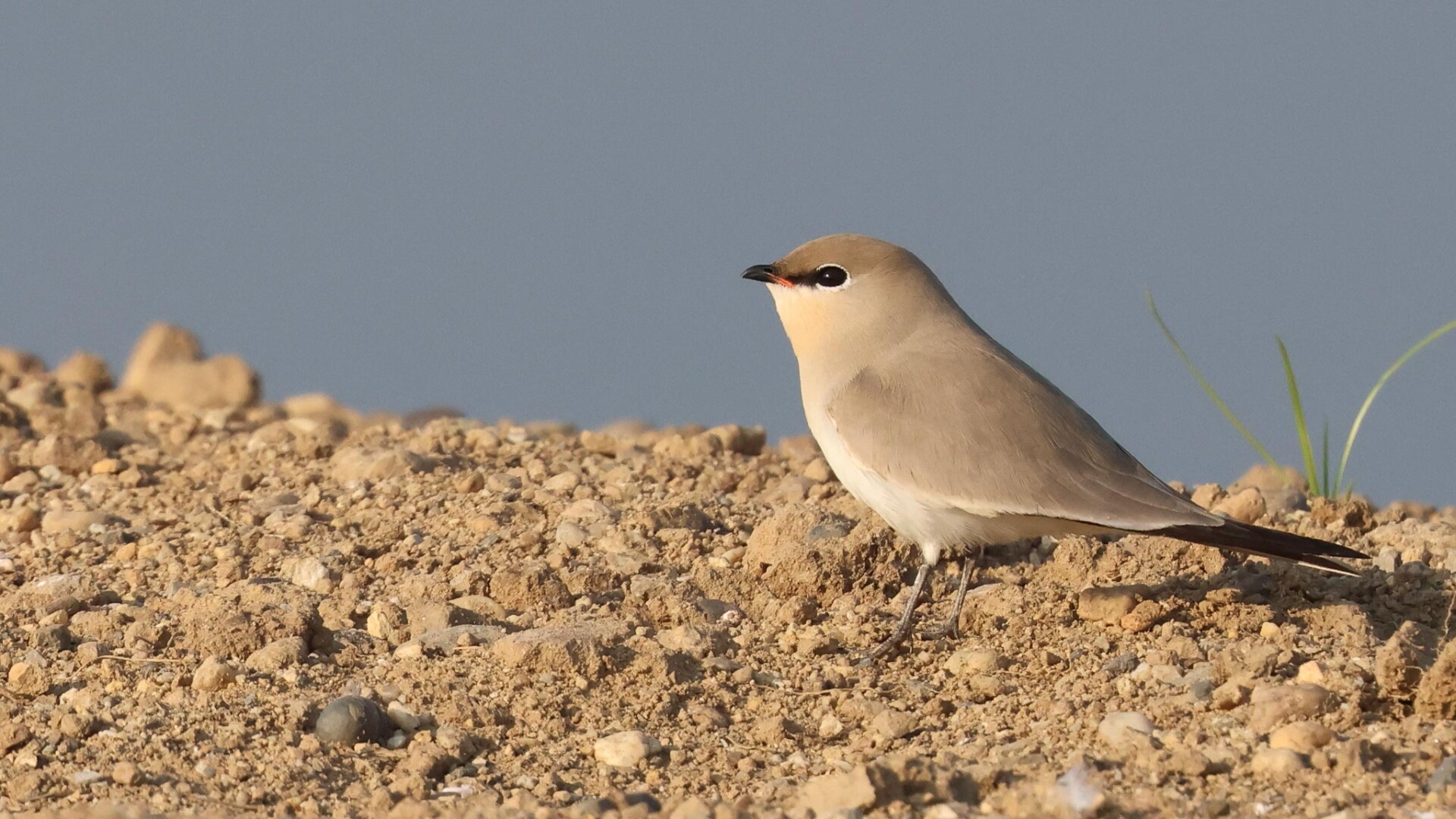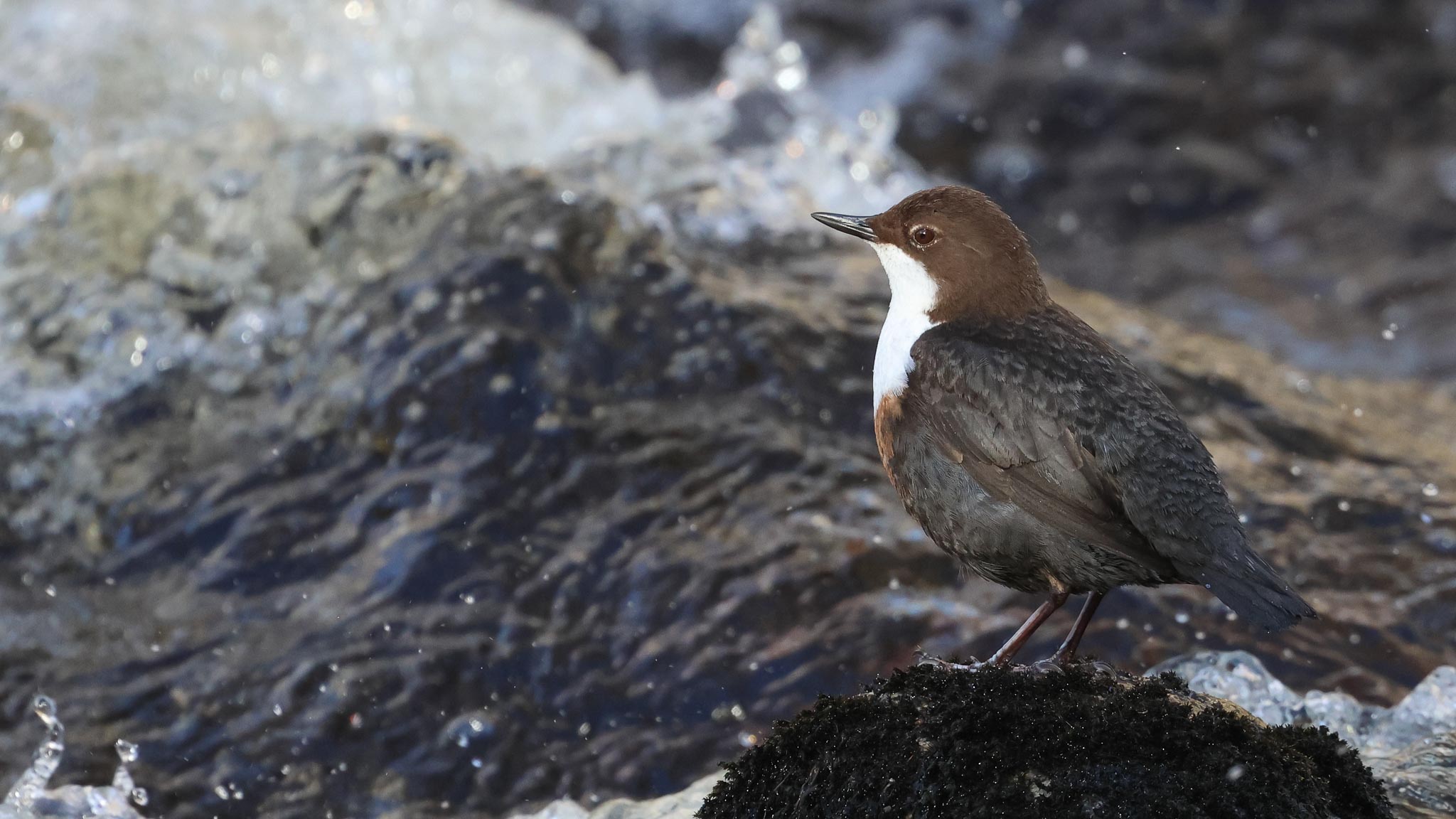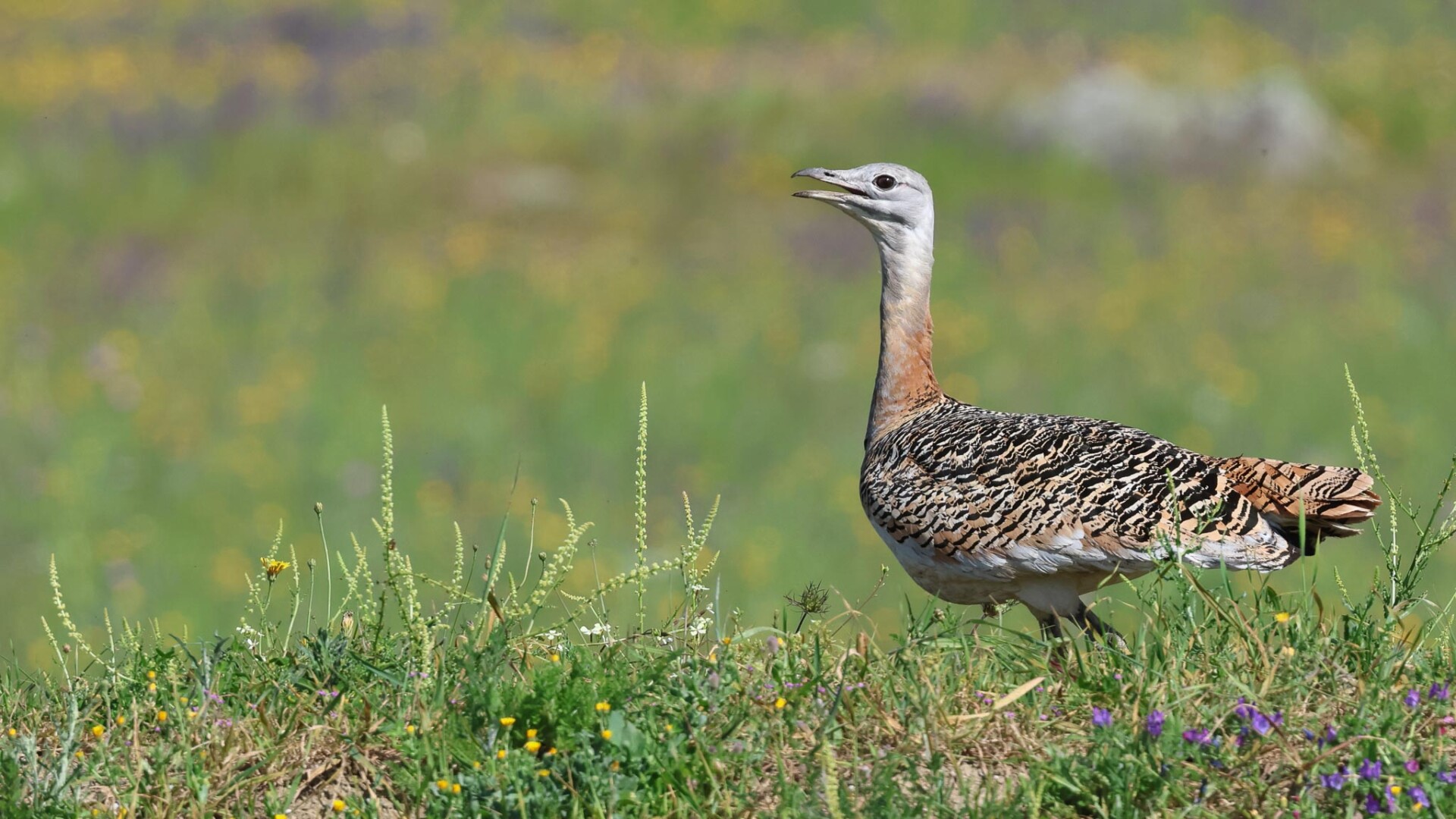Day 3 of a 4-day Spring Tour today. It was another cloudy & grey day, but thankfully remained dry after some misty drizzle first thing. It was chilly again, a maximum of 11C but feeling colder in the brisk northerly wind, very un-springlike once more.
Our destination for the morning was Burnham Overy. As we parked at the Staithe, there were lots of Swifts over the car park and low over the houses, and a few House Martins too, the first we have seen. There have been none around some of their traditional breeding sites the last few days, so hopefully they have just been looking for food elsewhere.
We walked out along the seawall. A Sedge Warbler was singing from the brambles below the bank and a Cetti’s Warbler shouted from along the edge of the ditch. A Little Grebe was in the channel along with several Common Pochard.
A Little Egret was feeding along the edge of the harbour channel. Looking further up, we could see a couple of Grey Plovers on the far side and a pair of Little Terns flew round calling and landed on the sandbar in the middle where they went to sleep. There are still good numbers of Brent Geese here and a large flock flew up from the saltmarsh and landed in the harbour channel. As we walked on, we found another couple of Grey Plovers were on the mud on the near side.
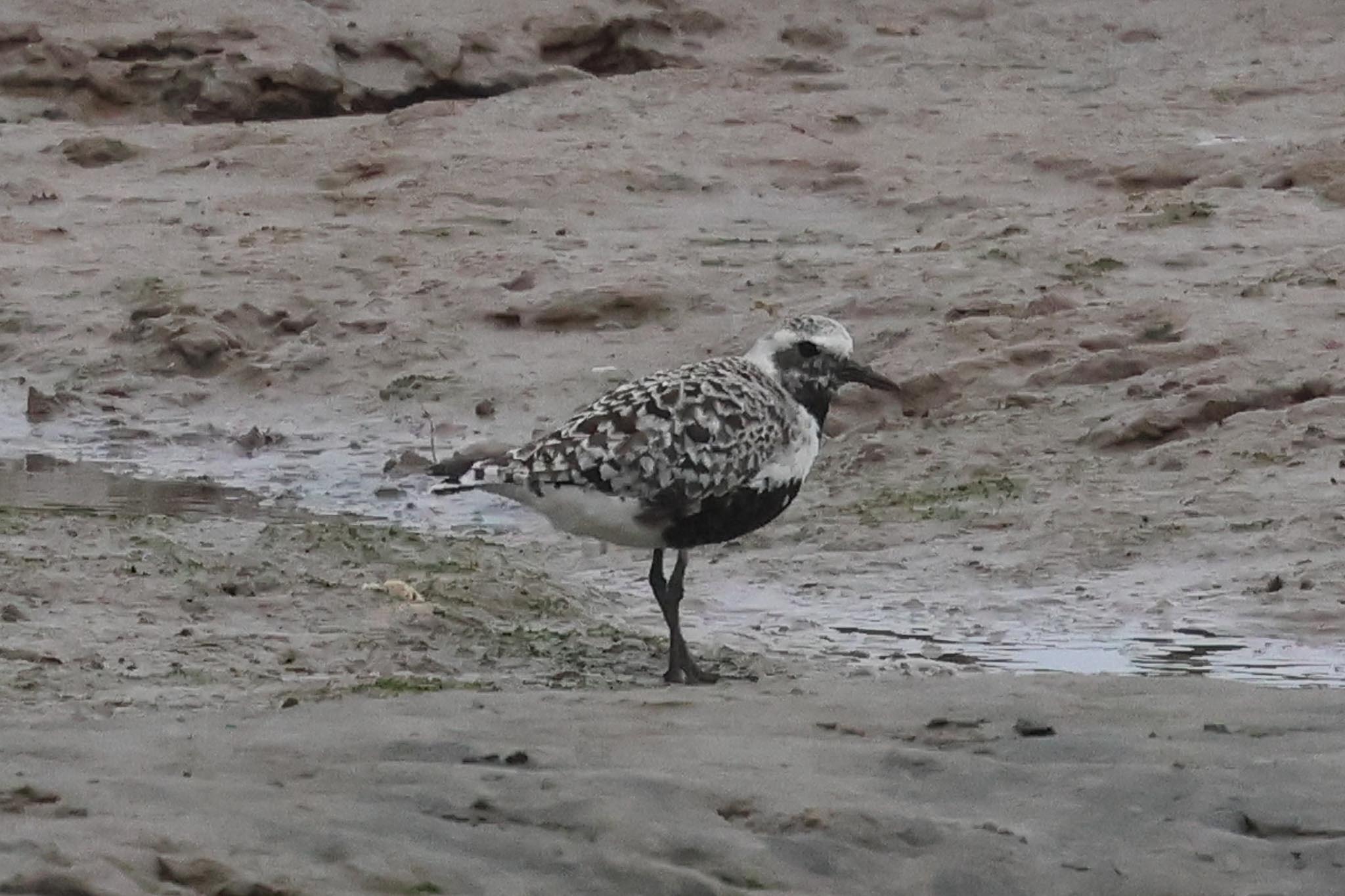
A Great White Egret flew in, its long legs stretched out behind it, and landed on a small pool out on the grazing marsh. It was sporting a dark grey bill, typical of birds in the breeding season but always a pitfall for the unwary looking for its non-breeding yellow bill. A Grey Heron made a beeline for it, chasing after it and the two of them flew round together, so we could see how similar they are in size. The Grey Heron wouldn’t let the Great White Egret settle, and it eventually flew off back towards the harbour.
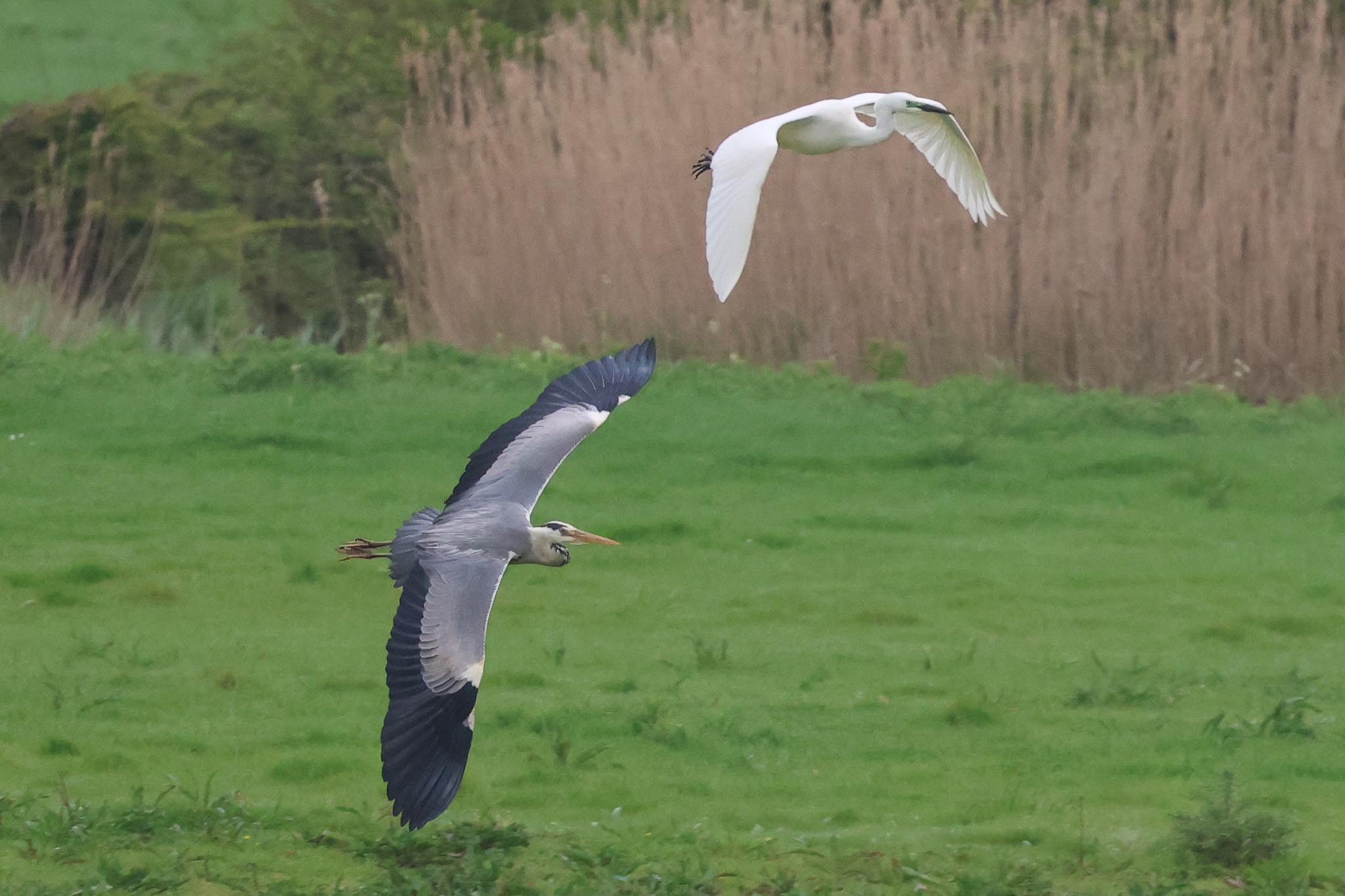
A 1st summer Little Gull flew across over the grazing marshes to the south of us and we watched it disappeared off over Whincover and quickly away to the east. We could see the dark ‘w’ mark on its upperwings. There were lots of Black-tailed Godwits on the muddy spur of the channel along with another couple of Grey Plover. There were several Shelduck and Avocets too and three Great Crested Grebes flew over and off towards the outer harbour.
We stopped on the corner by the junction with Whincover. Four Pink-footed Geese were out on the grass with the Greylags, at least one had an obviously damaged wing when it flapped. Most of the Pink-footed Geese have left for Iceland for the breeding season, but a small number usually linger, typically sick of injured birds which have been shot and wounded by wildfowlers and can’t make the long journey north.
Our first Spoonbill of the day flew over – we would see several flying in and out from the colony this morning. There was another pair of Great Crested Grebe on the reedbed pool and a couple more Great White Egrets flew in and out of the reeds. We listened for the Bittern which has been booming here recently but it was quiet today – it was probably just a bit too chilly for much activity.
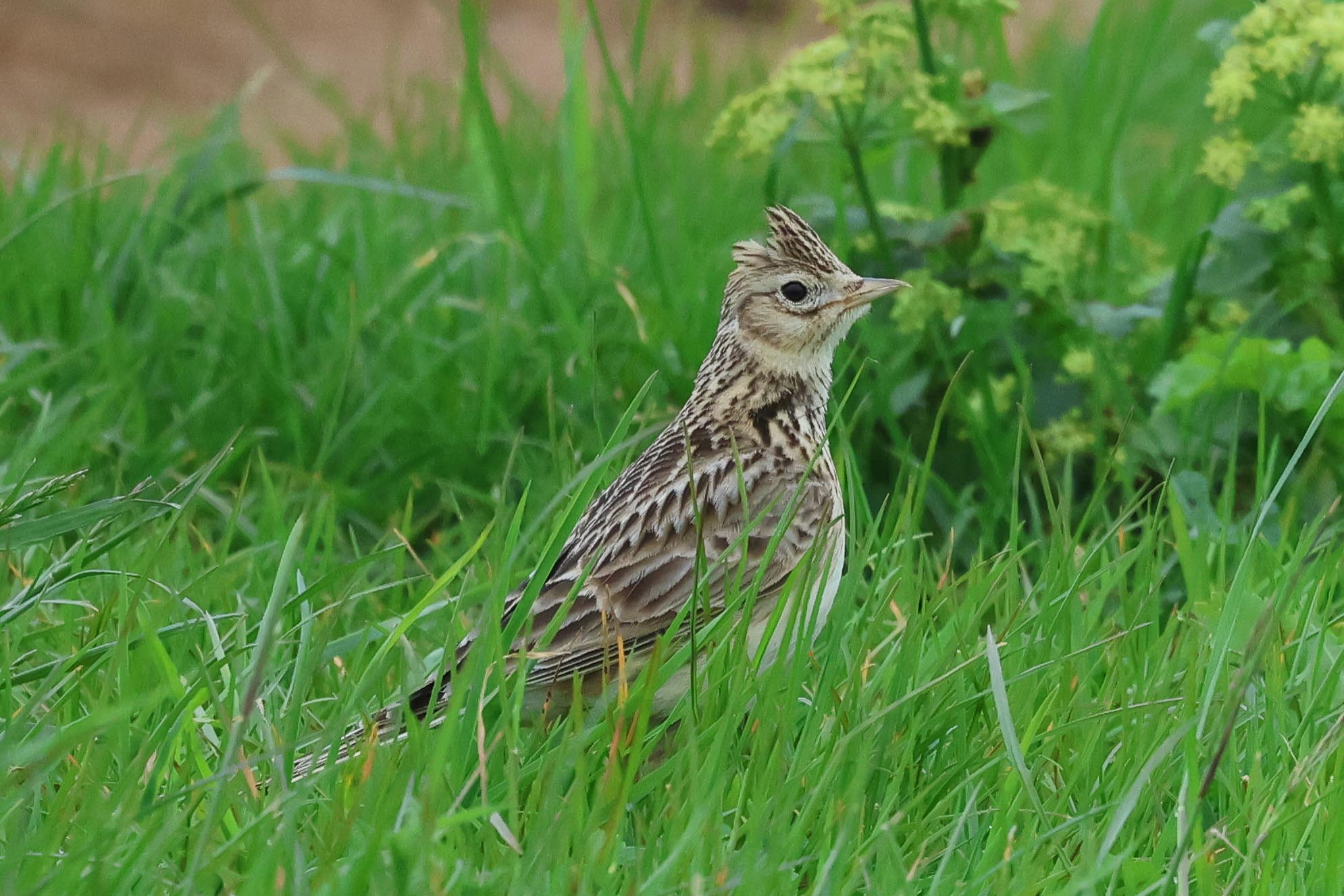
There were more Brent Geese on the saltmarsh further up and we stopped to watch a Skylark feeding on the side of the path ahead of us. There were several Reed Buntings singing in the suaeda bushes below the bank as we walked on towards the dunes. Scanning around the various herds of cows, we picked up a Cattle Egret very distantly on the grazing marsh towards Holkham, but before we could get the scope on it, it flew off towards the trees beyond.
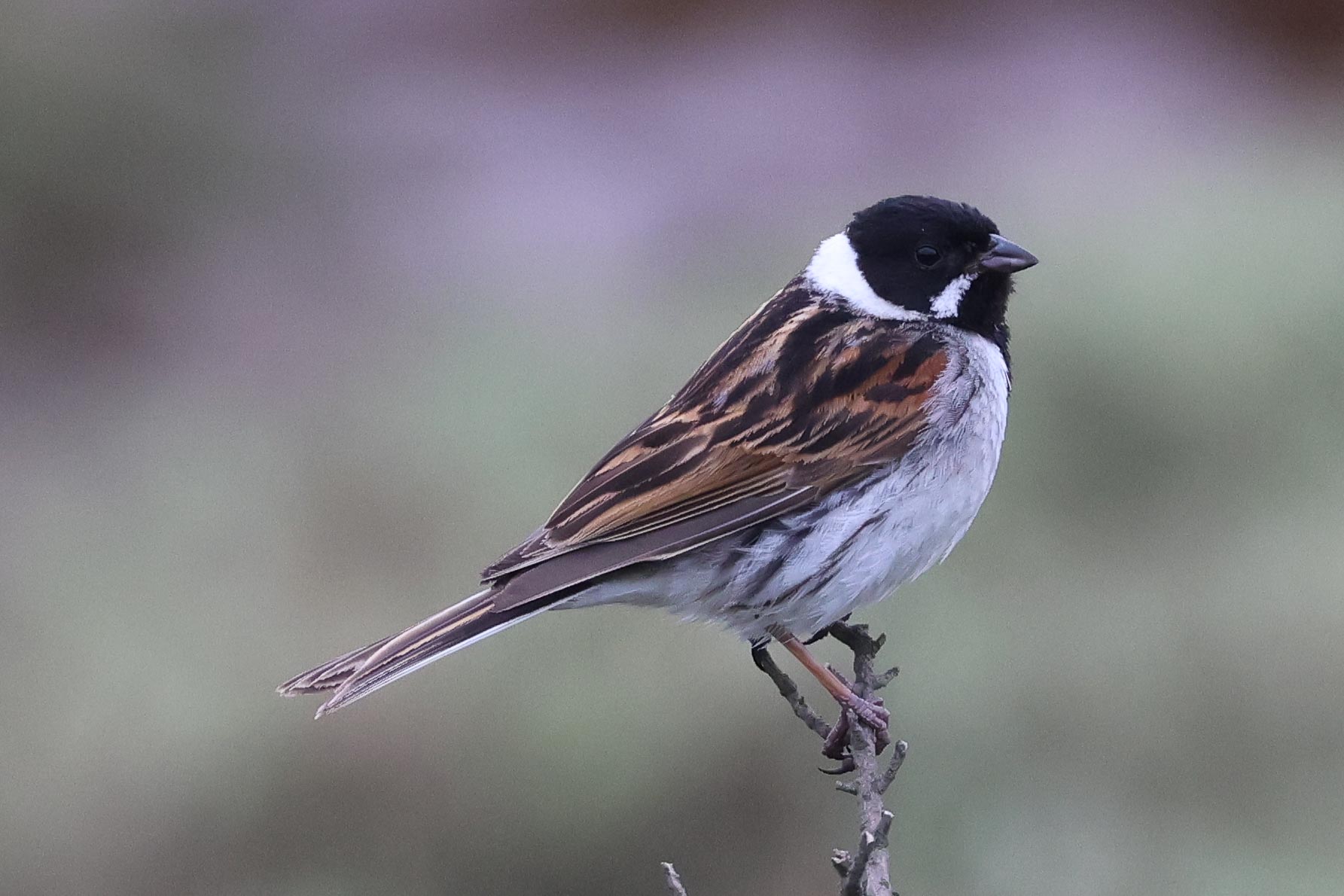
Out at the boardwalk bushes, there was no sign of any migrants today, though hard to tell whether the single Chiffchaff was on its way somewhere or resident, whereas the Common Whitethroat would almost undoubtedly be breeding here. A couple of Sedge Warblers were singing in the bushes too. There were several Linnets, and we stopped to admire a smart pink-breasted male on the top of the bushes when another darker male flew in and landed in the brambles right beside us.
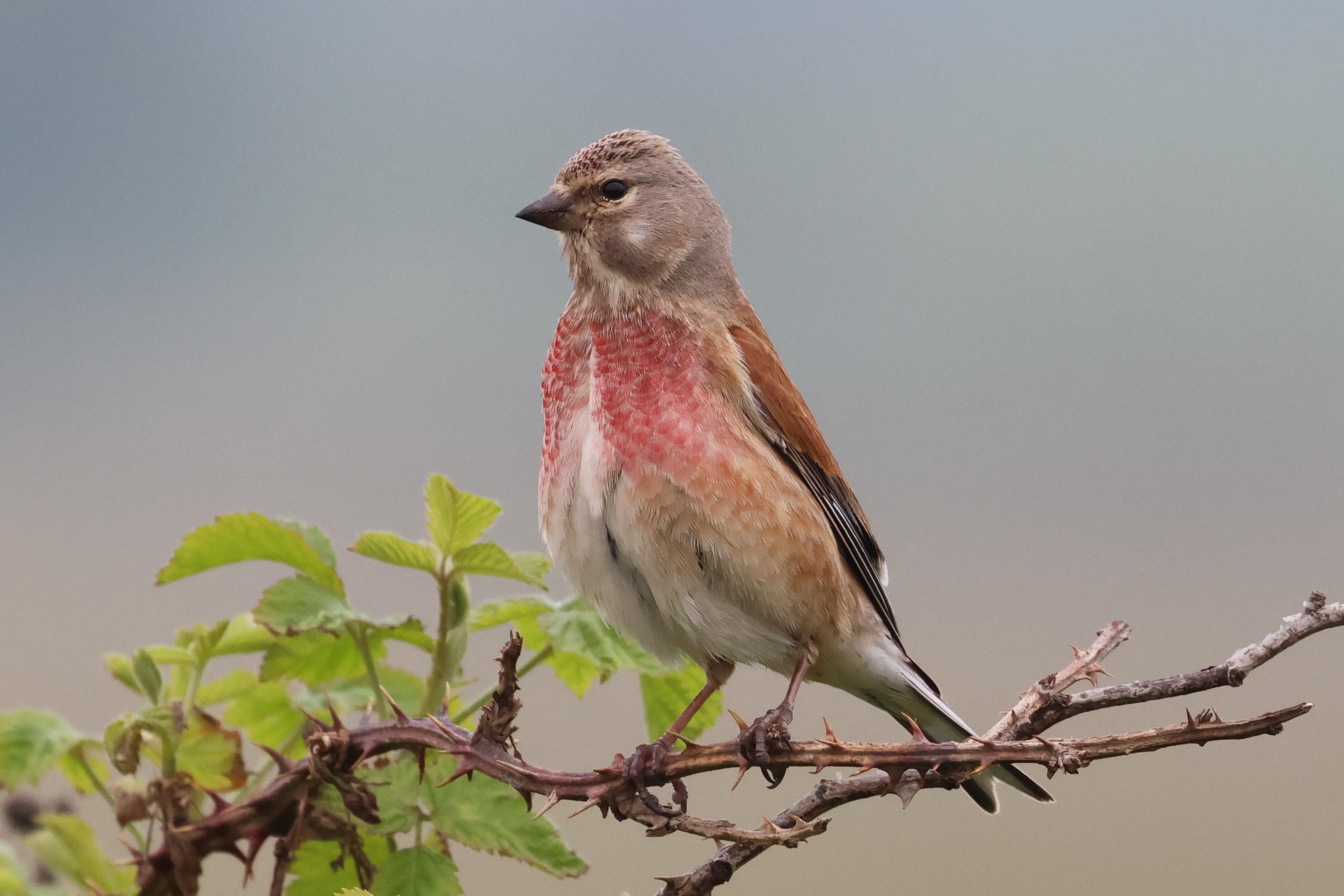
As we walked into the dunes beyond, a pair of Stonechats was alarm calling, presumably with a nest nearby. Over forty Linnets were feeding on the short grass beyond, nice to see them doing well here for a bird which has declined so sharply in farmland. Several Meadow Pipits flew up and down from the fence.
We carried on to the next ridge in the dunes. There were more Linnets, a couple of Lapwings, and two Brown Hares on the grass. We had a better view over the grazing marshes from the top of the dunes here and we found another Cattle Egret in the distance with the cows. It was hidden down in a reedy channel at first, but then flew round and landed in full view briefly. We could see the short orange bill and orange wash on the top of its head.
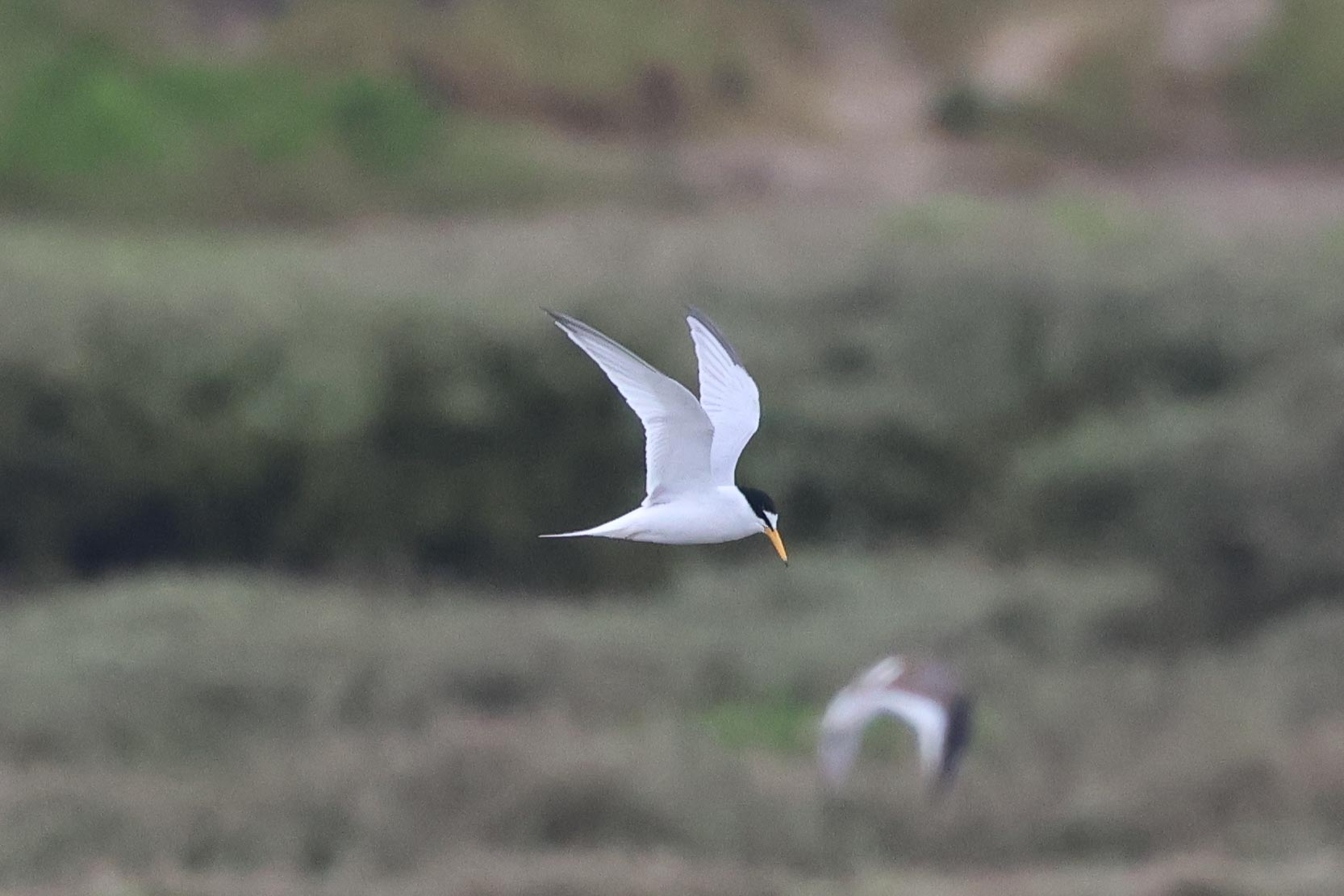
There was no sign of any migrants in the bushes, so we decided to walk back. A Whimbrel flew over the seawall and out across the grazing marsh and a flock of Dunlin was on the sandbar in the harbour now. Four Little Terns were feeding over the harbour channel now, as the waters rose, along with four Common Terns too. We could hear Bearded Tits in the small reedbed towards the village, but only saw one briefly in flight a couple of times. A Cuckoo was calling back by the village, but distant.
Back to the minibus, we drove round to Holkham for lunch. There had been a Garganey here on the pools by Lady Anne’s Drive but there was no sign of it now, nor were there any Grey Partridges in view. A Mistle Thrush was collecting food on the grass by the top of the Drive, presumably with young in the nest in the nearby trees.
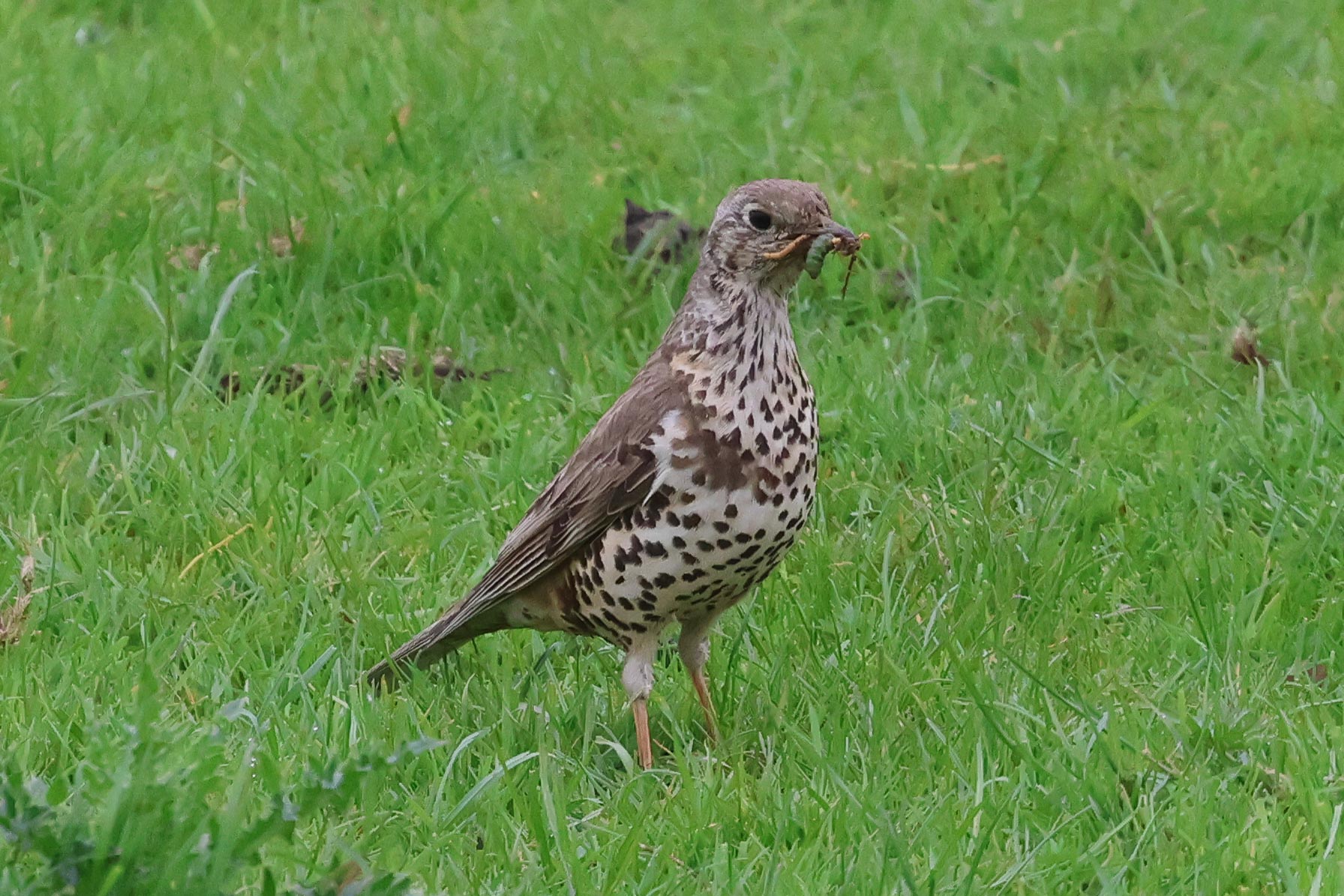
We ate lunch on the picnic tables by the Lookout. We could hear Chiffchaff and Willow Warbler singing in the trees. Several more Spoonbills flew in and out over the grazing marshes and one tried to sneak past over the pines behind us. There were lots of Common Swifts hawking for insects over the grazing marshes towards Wells.
Back to the minibus, we set off back towards the main road, but noticed two brown lumps in the grass in the overflow parking area where there weren’t any lumps earlier. An unscheduled stop to check and sure enough there were two Grey Partridge, so we got out and got the scope on them.
We drove west to Thornham Harbour now. There had been no sign of the Garganey there this morning, but it does come and go and as we walked up onto the bank we found a group people watching it. We had very good views of it on the small flood below the bank, swimming round feeding and calling on and off. It already appears to be starting its moult into eclipse plumage. Then it flew to the next flood along, and started bathing on the far shore before it was chased off by a Coot and flew on again to the big flood beyond.
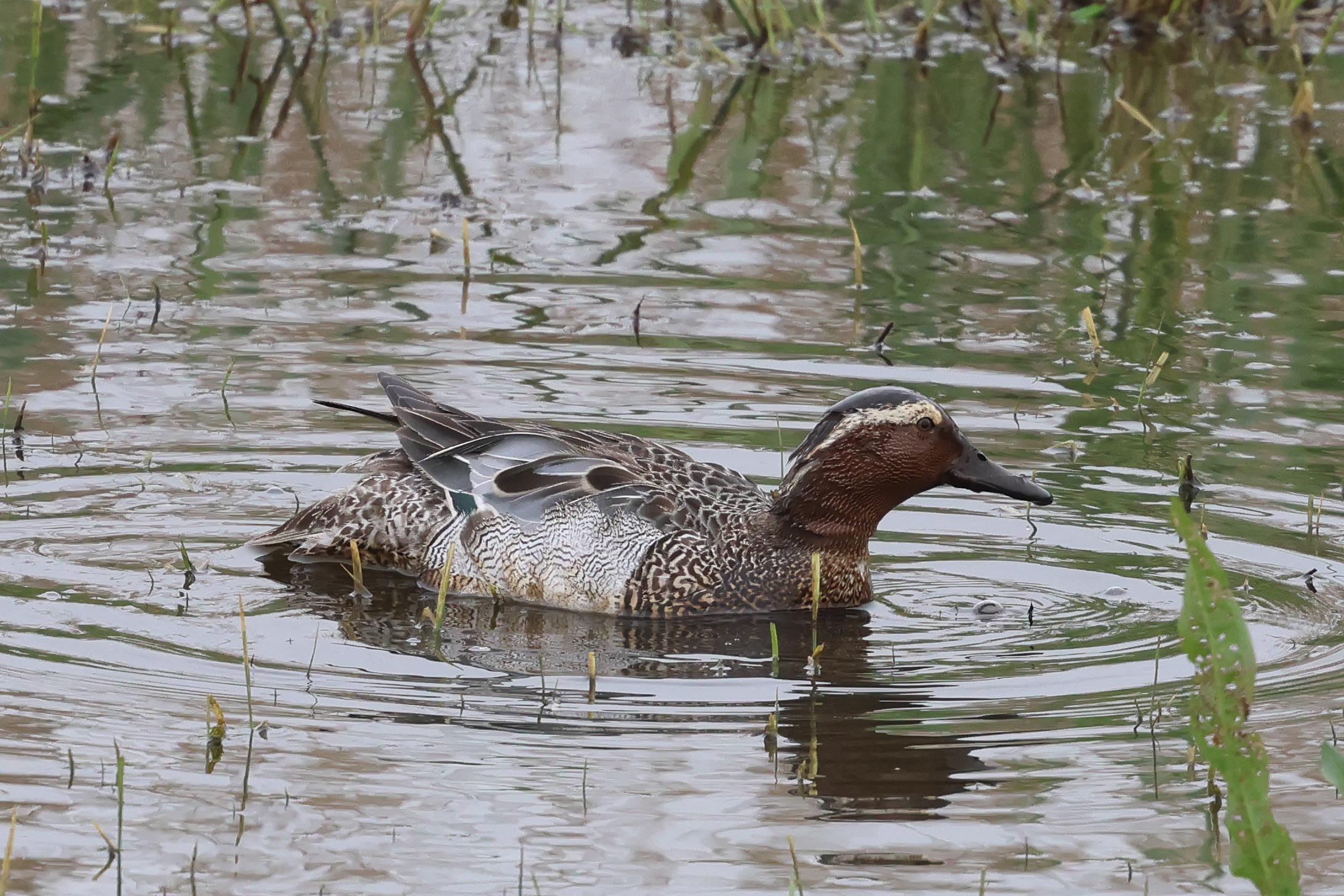
There were two Wood Sandpipers on the big flood, which worked their way gradually closer to us as they fed, and we had some very nice views through the scope of this very smart migrant wader, on their way north to Scandinavia and stopping here to feed before making the journey across the North Sea. A female Lapwing on the near edge of the water had two small juveniles. She was sheltering one at first, the other feeding nearby, before she flew off and left them – so much for wader childcare!

Looking out across the harbour, there were several Grey Plover, including a couple of very smart males in full breeding plumage, with jet black faces and bellies. A single Bar-tailed Godwit was feeding on the mud down in the channel and a Curlew dropped in briefly. We could see more small waders out on the beach beyond, including several Ringed Plover, Sanderling and Turnstone. A small group of 1st summer drake Common Eider were diving in the outer channel, but were disturbed by the assistant warden from Holme checking the tern cordon. Two Little Terns flew round over the beach.
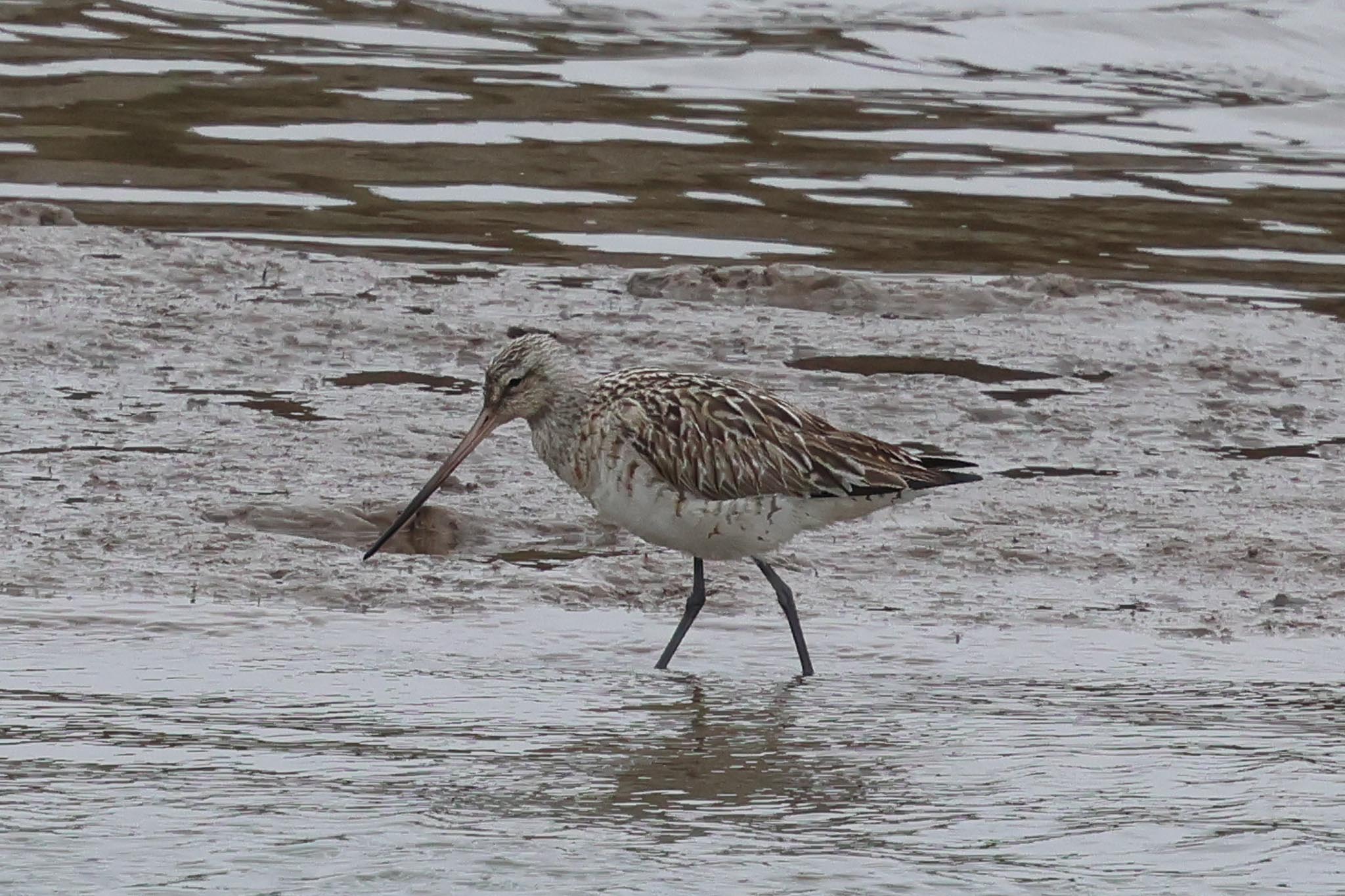
The Garganey had flown further up the big flood and gone to sleep. Looking over we could see three Wood Sandpipers now, in and out of the tufts of vegetation. The Garganey eventually woke up and started feeding again, and came much closer, down to the corner where we were standing, but wouldn’t lift its head! As we walked back to the minibus, we stopped to watch a Little Egret which was feeding on the near edge of the first flood. A Grey Heron was stalking round the edge of the reeds, eyeing up the ducklings.
We drove back to Wells and called in at North Point on our way back to finish the day, to see if any waders had dropped in. There were lots of Swifts, Swallows and Sand Martins hawking over the pools and we just caught the back end of a Hobby disappearing off east as we got out of the minibus. Two more Wood Sandpipers had just been found here, and we could see at least one of them on the back of the central pool from the car park. Two Marsh Harriers were grappling over the rape field in front of us and a Common Buzzard drifted over Wells beyond. Several Brown Hares were hiding out on the grass.
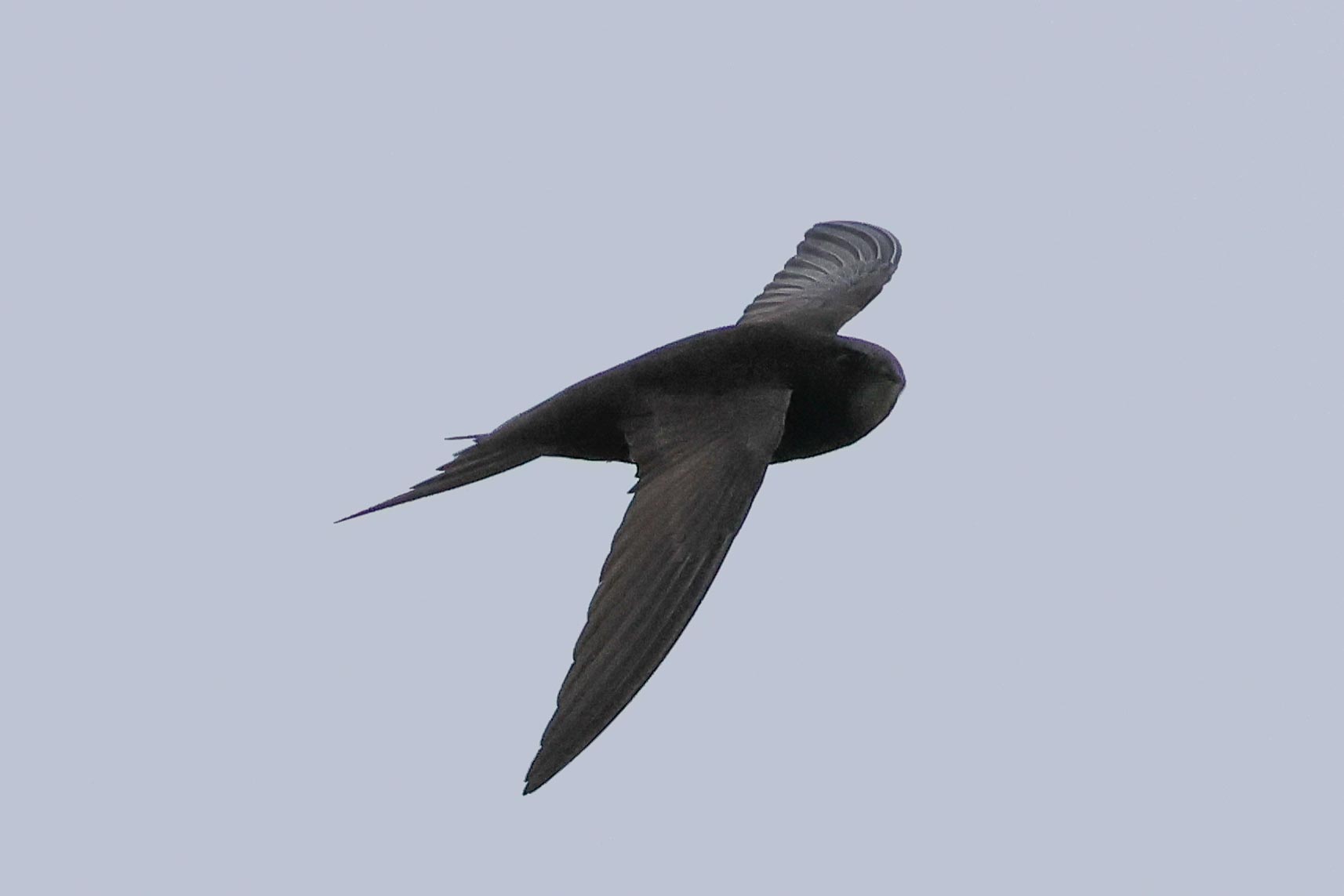
Walking down the track, we could see lots of gulls the other side, on the eastern pool, mostly Herring and Lesser Black-backed Gulls and Black-headed Gulls, but with a couple of Common Gulls too. Apart from Lapwings and Redshank, the only other wader we could find was a single Little Ringed Plover over towards the back. A Spoonbill flew over and disappeared off towards Wells.
It was time to head back – one more day tomorrow, and hopefully warmer weather forecast.
